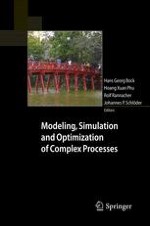This proceedings volume contains a selection of papers presented at the Fourth International Conference on High Performance Scientific Computing held at the Hanoi Institute of Mathematics, Vietnamese Academy of Science and Technology (VAST), March 2-6, 2009. The conference was organized by the Hanoi Institute of Mathematics, the Interdisciplinary Center for Scientific Computing (IWR), Heidelberg, and its Heidelberg Graduate School of Mathematical and Computational Methods for the Sciences, and Ho Chi Minh City University of Technology. The contributions cover the broad interdisciplinary spectrum of scientific computing and present recent advances in theory, development of methods, and applications in practice. Subjects covered are mathematical modelling, numerical simulation, methods for optimization and control, parallel computing, software development, applications of scientific computing in physics, mechanics, biology and medicine, engineering, hydrology problems, transport, communication networks, production scheduling, industrial and commercial problems.
